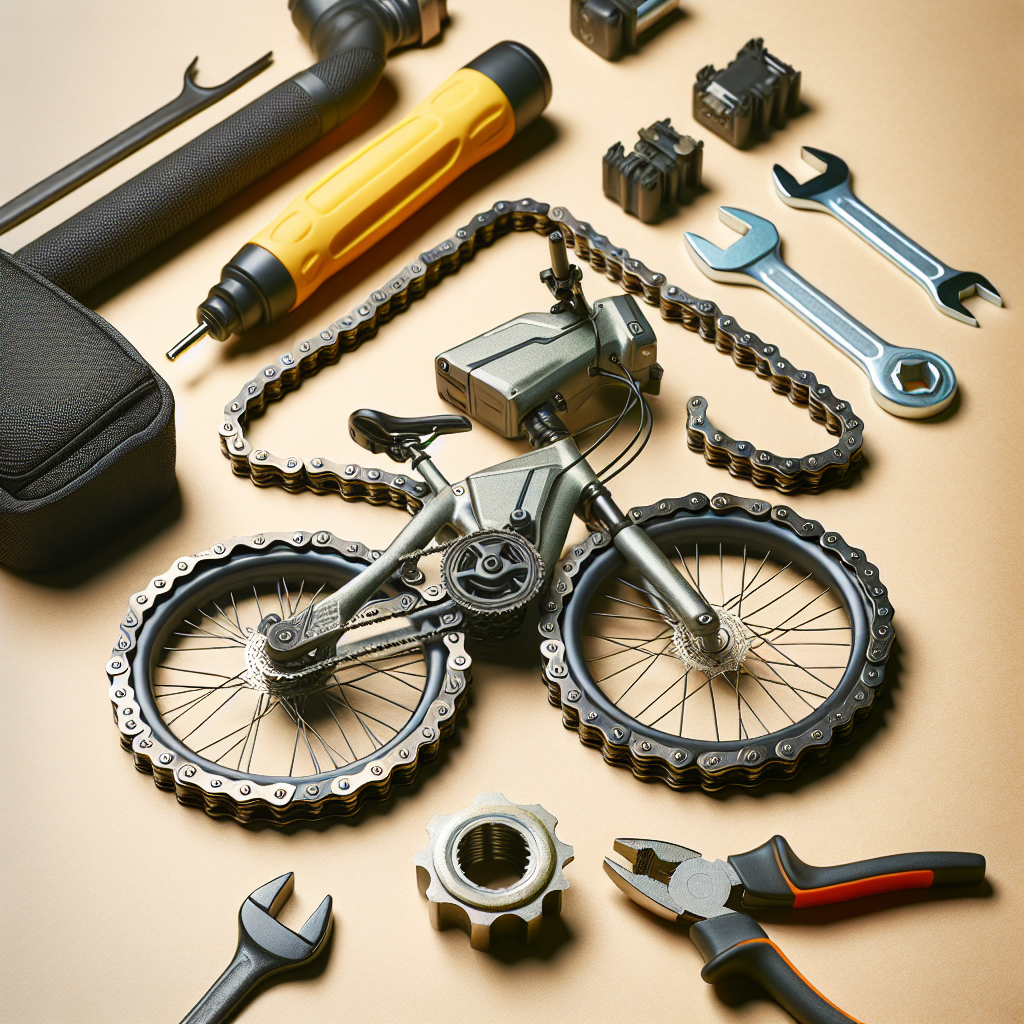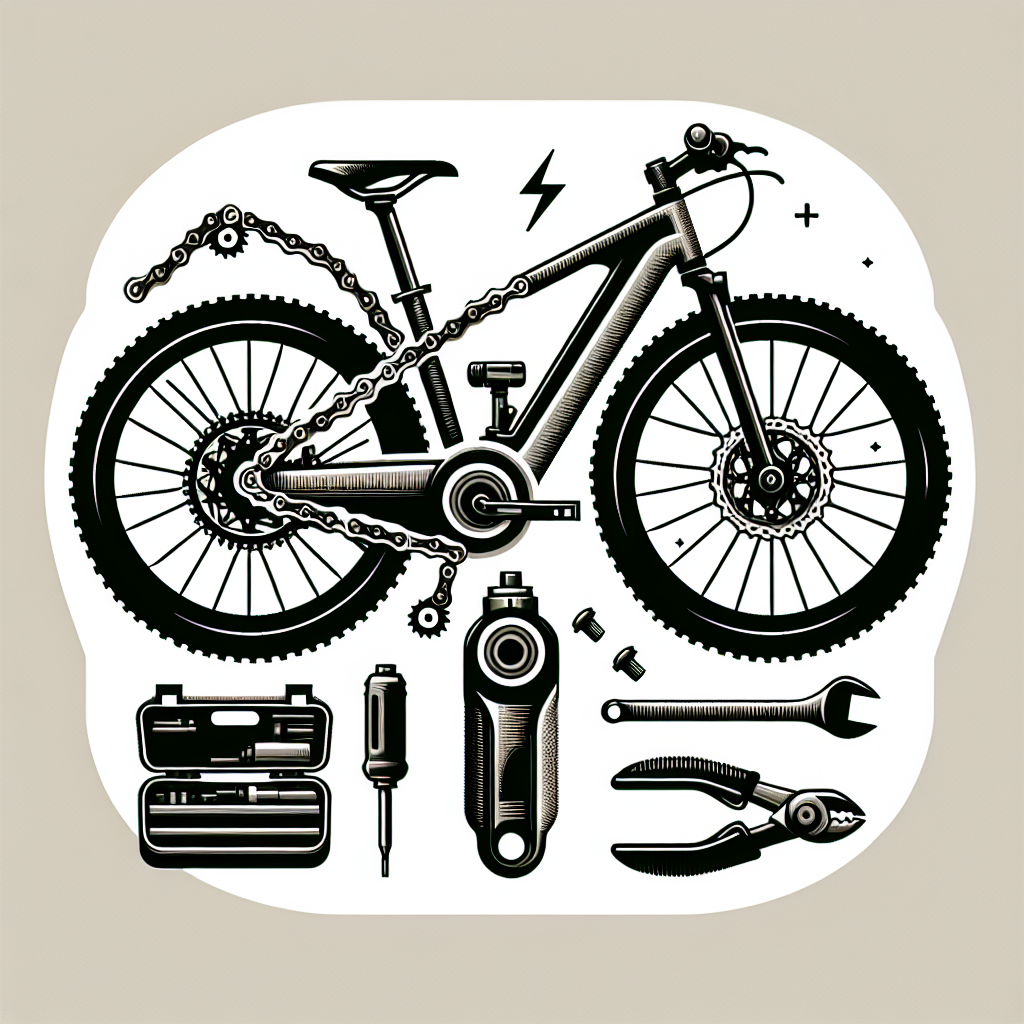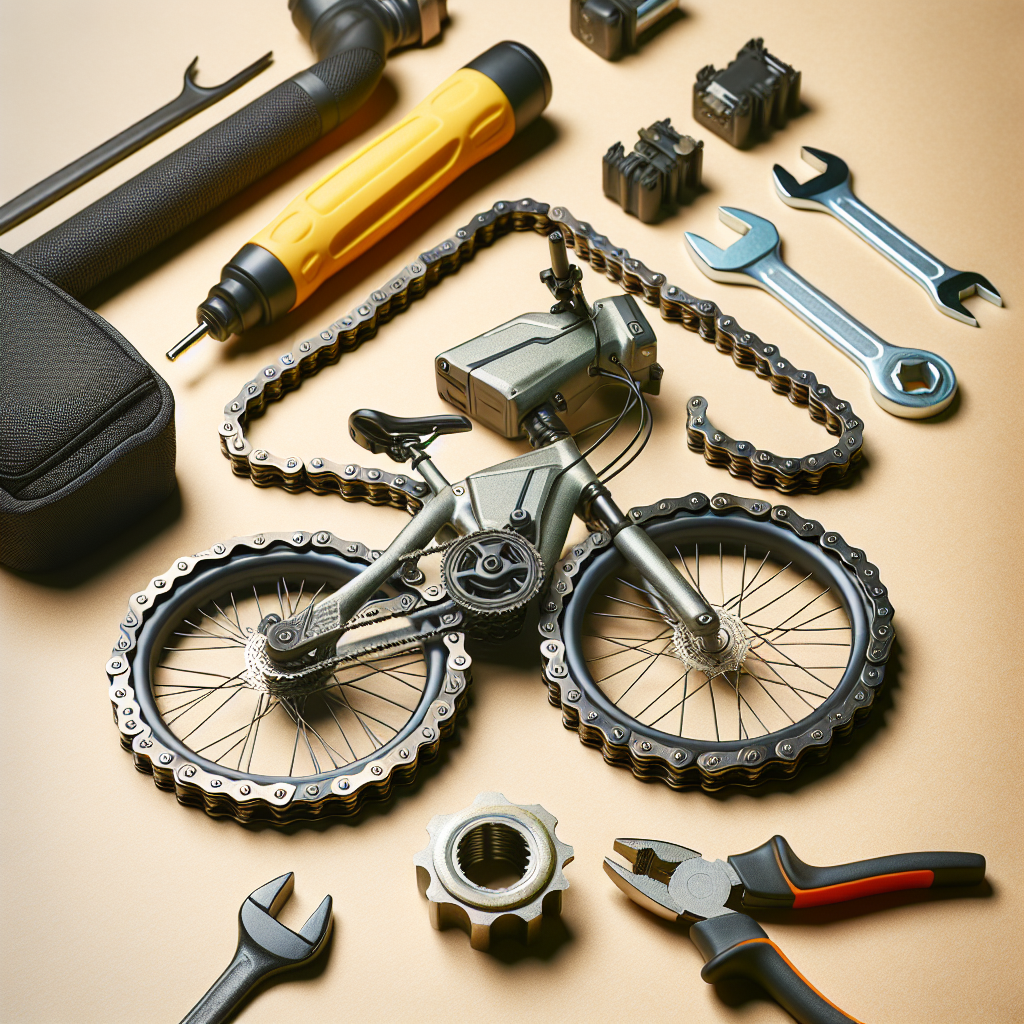Are you considering investing in an e-bike but worried about the cost of maintaining it? Well, fear not! In this article, we will explore the affordability of maintaining e-bikes and whether the common notion of them being costly holds true. By debunking myths and providing practical insights, you’ll gain a clearer understanding of the expenses associated with owning an e-bike and discover how they might actually be a more wallet-friendly option than you initially thought. Get ready to pedal into a world of cost-effective cycling!
Introduction
If you’re considering purchasing an e-bike, you may be wondering about the cost of maintaining it. While e-bikes can be a fantastic mode of transportation and offer many benefits, it’s important to understand the financial investment required in terms of regular and professional maintenance. In this article, we will explore the various aspects of e-bike maintenance and provide you with an overview of the potential costs involved.
Cost of E-bikes
Initial Purchase Price
The first factor to consider when calculating the cost of maintaining an e-bike is the initial purchase price. E-bikes can vary greatly in price depending on the brand, features, and quality. Generally, e-bikes with more advanced technology and higher specifications tend to have a higher price tag. It’s essential to research and compare different models to find the best e-bike that suits both your needs and your budget.
Additional Features and Upgrades
In addition to the initial purchase price, it’s important to factor in the cost of any additional features or upgrades you may want for your e-bike. These can include accessories such as fenders, racks, lights, and a more comfortable saddle. Additionally, you may decide to upgrade certain components like the suspension or the drivetrain for a better riding experience. While these upgrades can enhance your e-bike, they will also add to the overall cost.
Insurance
Another consideration that affects the cost of maintaining an e-bike is insurance. Depending on your location, it may be a legal requirement to have insurance for your e-bike. Even if it’s not mandatory, having insurance can provide peace of mind and financial protection in case of theft, damage, or accidents. The cost of insurance will depend on various factors, including the value of your e-bike and the coverage level you choose.

Regular Maintenance
Battery
One of the most essential components of an e-bike is the battery, and its maintenance is crucial for optimal performance and longevity. regular charging and proper handling are vital to ensure the battery operates efficiently. It’s recommended to follow the manufacturer’s guidelines regarding charging cycles and storage conditions. Additionally, battery health checks may be necessary to detect any potential issues or deterioration over time.
Tires
Just like with any bicycle, regular tire maintenance is necessary for safe and efficient riding. This includes monitoring tire pressure regularly and inflating them to the recommended levels. Tire rotation can also help to promote even wear and extend their lifespan. In case of a puncture, it’s essential to be prepared with a repair kit or spare tube to quickly fix any flat tires.
Brakes
Maintaining the brakes of your e-bike is of utmost importance for your safety. Regular inspection and adjustment of the brake pads and alignment are necessary to ensure optimal braking performance. Depending on the type of brakes your e-bike has, hydraulic fluid replacement may also be needed periodically. Ignoring brake maintenance can jeopardize your safety and result in costly repairs in the long run.
Drivetrain
The drivetrain includes components such as the chain, cassette, and derailleur, which need regular cleaning, lubrication, and adjustment. Keeping the drivetrain clean and properly lubricated helps prevent premature wear and ensures smooth and efficient gear shifting. Periodic inspection and adjustment of the derailleur are necessary to maintain precise and reliable shifting performance.
Suspension
If your e-bike is equipped with suspension, proper maintenance is essential for optimal comfort and control. This includes regular cleaning and lubrication of the suspension components, as well as periodic inspection and adjustment. It’s important to follow the manufacturer’s recommendations regarding suspension maintenance, as neglecting it can result in decreased performance and potential damage to the suspension system.
Lights and Electronics
Many e-bikes come equipped with lights and electronics, such as displays, controllers, and integrated navigation systems. Regularly checking and maintaining these components is important to ensure they function properly. The lights should be inspected for proper operation, and any issues should be addressed promptly. It’s also important to protect the electronic components from water damage by avoiding riding in heavy rain or using a waterproof cover.
Professional Maintenance
Scheduled Tune-ups
To keep your e-bike in top condition, it’s recommended to schedule regular tune-ups with a professional bike shop. These tune-ups typically include a comprehensive inspection, adjustment of various components, and lubrication. By having a professional assess and maintain your e-bike, you can ensure that any potential issues are addressed before they become more significant problems.
Bike Shop Labor Costs
Professional maintenance at a bike shop comes with labor costs that vary depending on the tasks performed and the region. It’s important to inquire about the prices beforehand and compare them between different bike shops. While these costs can add up, the expertise and quality service provided by professionals can help keep your e-bike running smoothly and minimize the risk of costly repairs in the future.
Replacement Parts
In the event that certain parts of your e-bike need to be replaced, it’s important to consider the cost of the replacement parts. Depending on the brand and model of your e-bike, some parts may be more expensive or harder to find than others. It’s advisable to inquire about the availability and cost of replacement parts before purchasing an e-bike, as this can impact the overall cost of maintenance down the line.

DIY Maintenance
Tools and Equipment
If you enjoy taking on maintenance tasks yourself and have the necessary tools and equipment, you can save on professional labor costs. However, it’s essential to invest in the right tools to ensure you can perform the required maintenance tasks efficiently and effectively. The cost of these tools and equipment varies, but it’s a one-time investment that can save you money in the long run if you plan to handle regular maintenance on your own.
Learning and Troubleshooting
DIY maintenance requires a certain level of knowledge and skill. Learning how to troubleshoot common issues and perform basic maintenance tasks can be achieved through online tutorials, videos, or even local workshops. By educating yourself and gaining confidence in maintaining your e-bike, you can save money and have a greater sense of ownership over your investment.
Replacement Parts
When performing DIY maintenance, it’s important to consider the cost of replacement parts. Some common replacement parts, such as brake pads or inner tubes, are relatively inexpensive and easily accessible. However, certain specialized parts may be harder to find or come with a higher price tag. It’s essential to research and compare prices to ensure you are getting the best value for your money.
Battery Maintenance
Charging
Proper charging habits are essential for maintaining the health and longevity of your e-bike battery. It’s important to follow the manufacturer’s guidelines regarding charging cycles and storage conditions. Avoid overcharging or fully depleting the battery, as both can have a negative impact on its overall lifespan. By adopting good charging habits, you can ensure your battery remains in good condition for an extended period.
Replacing or Upgrading Batteries
At some point, you may need to replace your e-bike battery. The cost of a new battery can vary depending on the brand, capacity, and technology. It’s advisable to explore different options and consider factors such as battery life, warranty, and compatibility with your e-bike model. Additionally, if you decide to upgrade your battery to a higher capacity or a more advanced technology, there will be an additional cost associated with it.
Battery Lifespan
The lifespan of an e-bike battery depends on various factors, including usage, charging habits, and overall maintenance. On average, e-bike batteries last between 3 to 5 years. However, with proper care and maintenance, it is possible to extend the lifespan of your battery. Regularly monitoring the battery’s health and taking appropriate measures can help ensure optimal performance and avoid premature replacement costs.
Tire Maintenance
Inflation and Pressure
Maintaining proper tire pressure is crucial for both performance and safety. Regularly checking tire pressure using a reliable gauge and inflating the tires to the recommended levels is essential. Underinflated tires can lead to increased rolling resistance, decreased range, and a higher risk of punctures. Overinflated tires, on the other hand, can result in decreased comfort and traction.
Tire Rotation
Rotating the tires periodically can help promote even wear and extend their overall lifespan. This can be done by swapping the front and rear tires, as the front wheel tends to wear down faster due to steering forces. By rotating the tires, you can maximize their mileage and avoid premature replacement costs.
Puncture Repair
Despite taking precautions, punctures can still occur. Knowing how to repair a punctured tire is a useful skill to have, as it can save you money on tire replacements. Basic puncture repair kits are affordable and readily available, allowing you to patch up small holes without the need for a professional. However, it’s important to assess the severity of the puncture and consult a professional if needed.
Brake Maintenance
Pad Replacement
Brake pads gradually wear down over time and need to be replaced periodically. The frequency of pad replacement will depend on factors such as usage, riding conditions, and brake system type. It’s important to inspect the brake pads regularly and replace them when they become worn down to ensure optimal braking performance. Replacing brake pads promptly can also help prevent damage to the braking surface, potentially saving you from more expensive repairs.
Adjustment and Alignment
Proper brake adjustment and alignment are crucial for effective braking and rider safety. Periodically checking the brake lever feel, pad clearance, and cable tension can help identify any issues that require adjustment. Brake misalignment can hinder braking performance and put unnecessary strain on the components, leading to premature wear and potential damage.
Fluid Replacement (Hydraulic Brakes)
For e-bikes equipped with hydraulic brakes, the hydraulic fluid may need to be replaced periodically. Over time, the fluid can become contaminated or lose its effectiveness, affecting braking performance. A professional should handle hydraulic brake fluid replacement, as it requires specialized knowledge and tools. The cost of this maintenance task will vary depending on the specific brake system and labor charges.
Drivetrain Maintenance
Cleaning and Lubrication
The drivetrain of an e-bike is exposed to dirt, debris, and moisture, which can negatively impact performance and longevity. Regular cleaning and lubrication of the chain, cassette, and derailleur are necessary to prevent premature wear and ensure smooth operation. It’s important to use appropriate cleaning products and lubricants specifically designed for bicycle drivetrains to avoid damage.
Chain and Cassette Wear
The chain and cassette are crucial components of the drivetrain that experience gradual wear over time. Monitoring their wear levels and replacing them when necessary is essential to maintain performance and prevent damage to other drivetrain components. It’s recommended to regularly measure chain wear using a chain wear indicator tool and replace the chain before it becomes excessively stretched.
Derailleur Adjustment
The derailleur is responsible for shifting gears smoothly and accurately. Periodic inspection and adjustment of the derailleur are necessary to ensure precise shifting performance. Issues such as skipping gears or hesitation during shifting can indicate the need for derailleur adjustments. By maintaining proper derailleur alignment and tension, you can prevent unnecessary drivetrain wear and potential costly repairs.
Conclusion
In conclusion, while there are costs associated with maintaining an e-bike, it’s important to consider the overall benefits and value it provides. The cost of regular and professional maintenance, including battery care, tire maintenance, brake maintenance, and drivetrain upkeep, should be factored into your budget when purchasing an e-bike. By properly maintaining your e-bike and promptly addressing any maintenance needs, you can prolong its lifespan, ensure optimal performance, and enjoy a safe and enjoyable ride for years to come.

